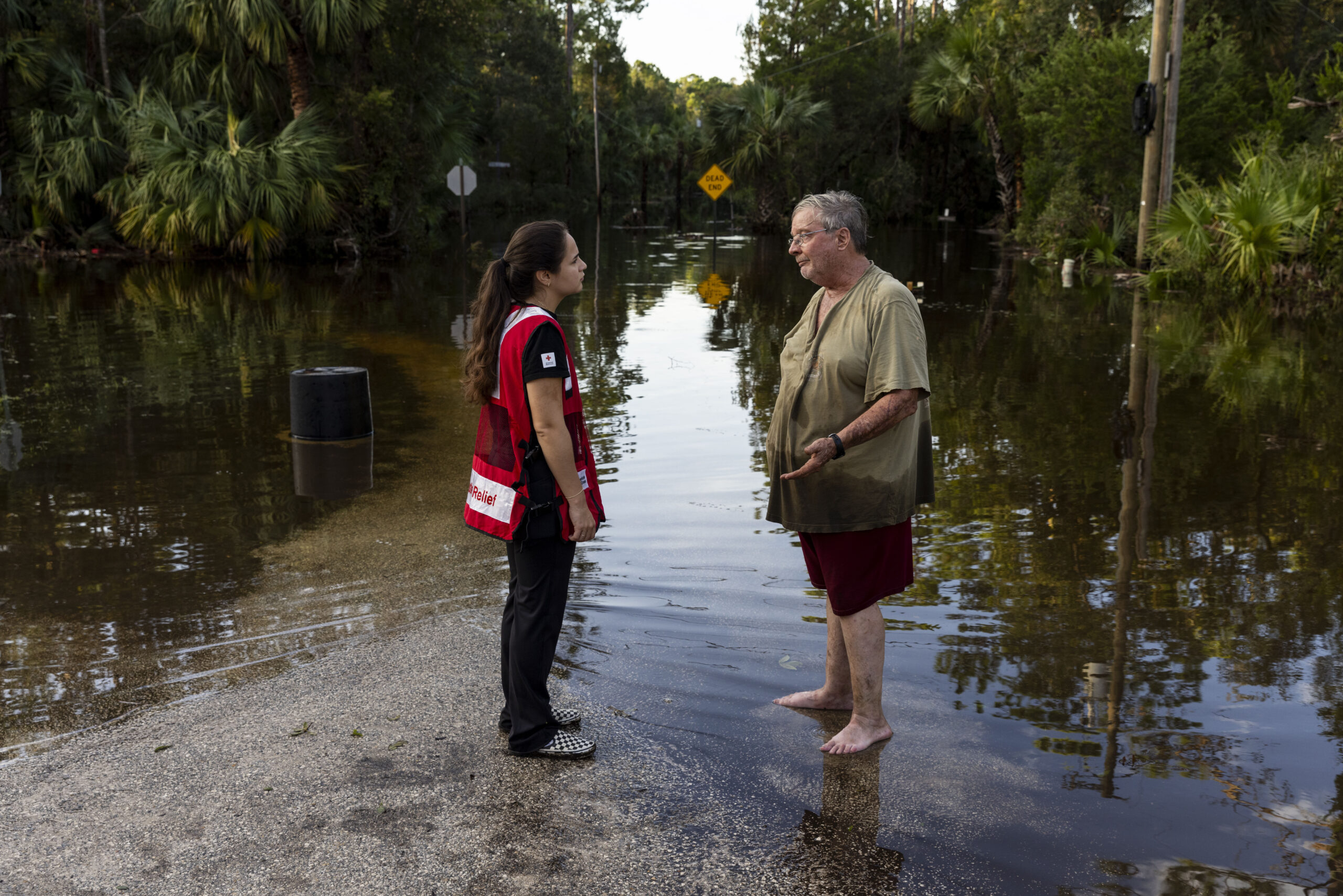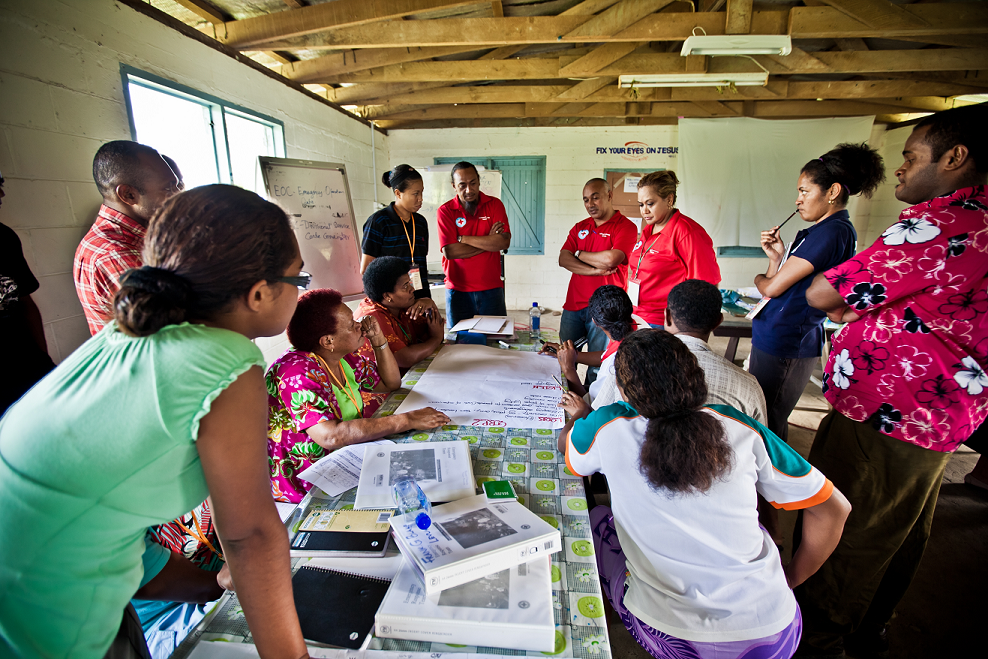Civil War, Cereal, and Smart Compassion
When you live in a valley surrounded by mountains, you see everything coming. For the past few years, we feared tanks and troops. This time was different. As spring slowly transformed the mountains, humanitarian trucks appeared on the horizon. It was 1995, I was seven years old, and the post-soviet civil war had forced my Pamiri minority group to flee to our ancestral land in the Badakhshan region of Tajikistan.
As we watched the trucks grow larger as they neared the valley, the emblems on the flour and aid they bore were etched in my mind. The “From the American People” USAID logo came to represent hope. The gratitude that I felt at that moment has driven my career to give back and work at the federal agency that delivers aid on behalf of all Americans: the U.S. Agency for International Development (USAID). Within USAID, I get to work within the Office of U.S. Foreign Disaster Assistance (USAID/OFDA), the office responsible for providing disaster relief and humanitarian aid like what saved us from chronic hunger in Tajikistan during the 1991-1997 civil war.
When many people imagine humanitarian work, they think of trucks pulling into towns and cities ravaged by war or natural disasters and aid workers handing out bags of flour, grains, and other food aid to smiling locals. I can tell you that is true. What many don’t realize is that there are lots of organizations and groups that send other things, including unsolicited non-cash donations. Now that I work in this field, I know that unsolicited material donations are items that are not requested by locals, humanitarian experts on the ground, or aid agencies. Unsolicited material donations can be anything from used clothing to live pigs, and lots of non-urgent items in-between.
I have my own story I like to tell about this; my family got rations of these unsolicited donations that we could not identify. They were flakes, dipped in sugar, and very thin. They were a treat, as far as we could tell, so my mom put them on a plate at tea time. As my extended family looked on, my mother gamely took the lead and gingerly picked up a single flake. What was that treat we like cookies? Sugary corn flake cereal.
We laugh at it now, but the story serves to illustrate how unsolicited donations can be culturally inappropriate at best and detrimental at worst. I imagine a kid in the U.S. packed his or her favorite cereal to help war-affected kids like me overseas; what he may not have realized is we did not eat a western diet, and in particular, processed breakfast cereals. Because we had never eaten them, our bodies struggled to process them. This is one of the many strains this type of donation can cause to survivors. But unsolicited material donations, however well-intended, can also negatively affect relief operations overall, by clogging emergency supply chains and taking valuable time, resources, and expertise from crucial aid programs and aid workers.
Stories like mine about unsolicited donations are common, and I hear a lot of them in my position at USAID’s Center for International Disaster Information (CIDI). The Center was created in 1988 to inform donors about the most constructive way to support disaster relief. We encourage donors to practice Smart Compassion: to channel their compassion and generosity (like the kid who sent the cereal) into the most effective way to help disaster-affected people – which is through cash donations to relief and charitable organizations. Why is cash best and unsolicited donations harmful? Cash enables relief organizations to purchase exactly what is needed locally, when it is needed. This ensures that supplies are fresh, culturally appropriate and arrive quickly in the right amounts. Cash donations are easiest for donors, most efficient for relief organizations and most effective for disaster-affected communities.
We have a tool to help illustrate this: the Greatest Good Donations Calculator. For example, if you were to buy a teddy bear for $19.99 in Washington, D.C. and donate it to Kabul, Afghanistan, the price of shipping alone [not to mention storage, distribution, etc.] would be $273.43. If you were to donate that $273.43 to a relief organization, they can purchase 54,686 liters of clean water locally. This would provide 27,343 people with 2 liters of clean drinking water for a day. This is Smart Compassion.
As a former aid recipient and now with a career in humanitarian assistance, I am continuously humbled by the generosity people demonstrate to others who are in need. That is why I am happy to work at USAID CIDI to provide prospective donors with resources, including the calculator and our toolkit, to ensure that their kindness effectively, efficiently and quickly translates their compassion to people across borders and cultures during times of need.
Lessons Learned :
Avoid Unsolicited Material Donations
Items that are not specifically requested by locals, humanitarian experts on the ground, or aid agencies are called unsolicited donations.
Unsolicited Donations Can Be Harmful
Unsolicited donations require money, time, energy, and dedication from aid workers. This time spent loading, packing, moving, storing, cleaning, and distributing these unsolicited donations means time and money that is not spent on emergency disaster relief materials or actions.
Cash is Best
Monetary donations are the most effective and efficient way of helping survivors of disasters. Aid workers have access to the money so they can buy exactly what is needed, when it is need locally. This supports the local economy and ensures that everything is culturally appropriate.
Practice Smart Compassion
Smart Compassion means informing your need to help those who are suffering with information from trusted humanitarian organization on the ground to ensure you are not sending unsolicited donations. Instead, make sure your organization is reliable, that you like the work they did, and that you send monetary donations.
Supporting Materials :




